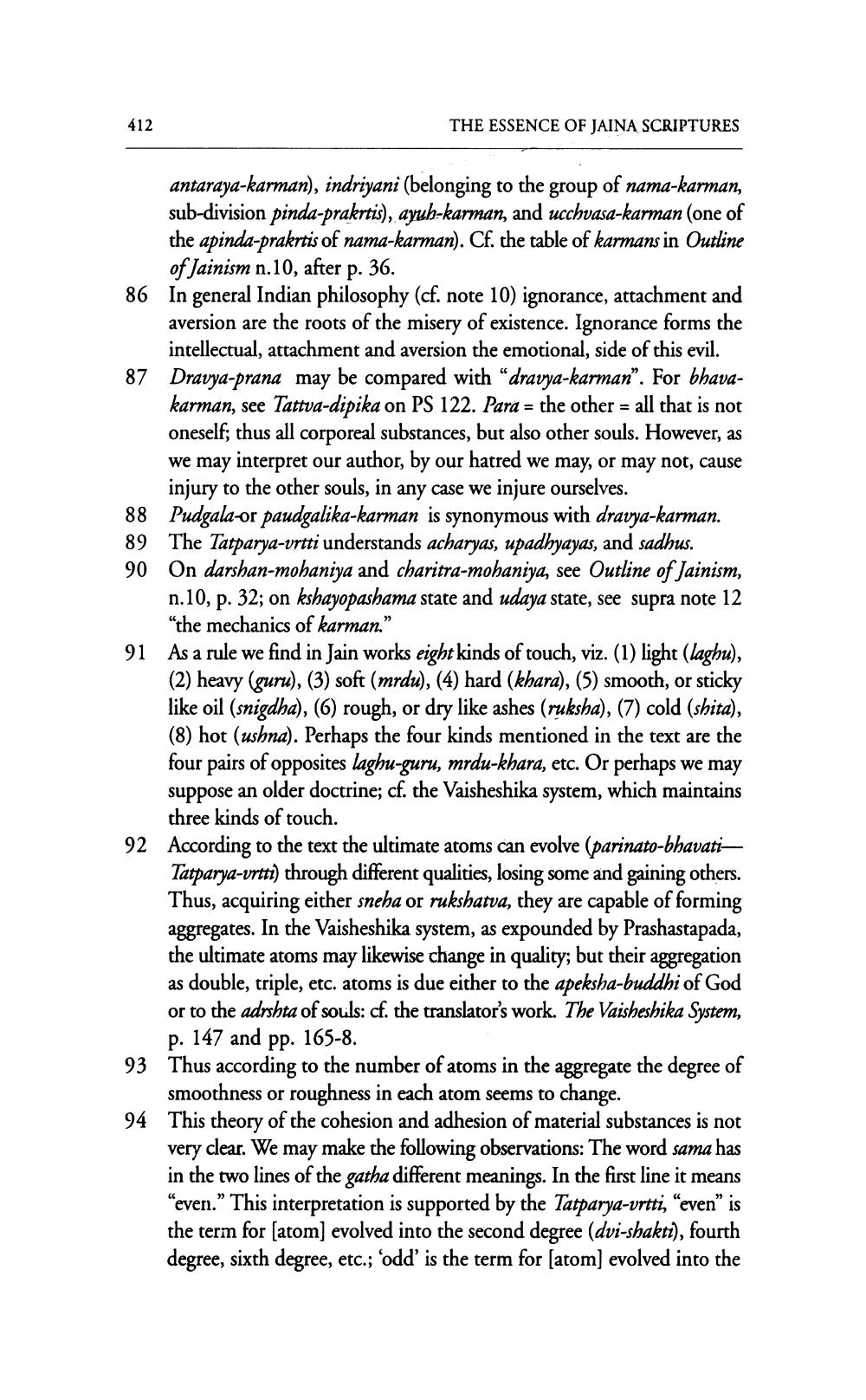________________
412
THE ESSENCE OF JAINA SCRIPTURES
antaraya-karman), indriyani (belonging to the group of nama-karman, sub-division pinda-prakrtis), ayuh-karman, and ucchuasa-karman (one of the apinda-prakrtis of nama-karman). Cf. the table of karmans in Outline of Jainism n.10, after P. 36.
86 In general Indian philosophy (cf. note 10) ignorance, attachment and aversion are the roots of the misery of existence. Ignorance forms the intellectual, attachment and aversion the emotional, side of this evil. 87 Dravya-prana may be compared with "dravya-karman". For bhavakarman, see Tattva-dipika on PS 122. Para = the other = all that is not oneself; thus all corporeal substances, but also other souls. However, as we may interpret our author, by our hatred we may, or may not, cause injury to the other souls, in any case we injure ourselves.
88 Pudgala-or paudgalika-karman is synonymous with dravya-karman. 89 The Tatparya-vrtti understands acharyas, upadhyayas, and sadhus. 90 On darshan-mohaniya and charitra-mohaniya, see Outline of Jainism, n.10, p. 32; on kshayopashama state and udaya state, see supra note 12 "the mechanics of karman."
91 As a rule we find in Jain works eight kinds of touch, viz. (1) light (laghu), (2) heavy (guru), (3) soft (mrdu), (4) hard (khara), (5) smooth, or sticky like oil (snigdha), (6) rough, or dry like ashes (ruksha), (7) cold (shita), (8) hot (ushna). Perhaps the four kinds mentioned in the text are the four pairs of opposites laghu-guru, mrdu-khara, etc. Or perhaps we may suppose an older doctrine; cf. the Vaisheshika system, which maintains
three kinds of touch.
92 According to the text the ultimate atoms can evolve (parinato-bhavati— Tatparya-vrtti) through different qualities, losing some and gaining others. Thus, acquiring either sneha or rukshatva, they are capable of forming aggregates. In the Vaisheshika system, as expounded by Prashastapada, the ultimate atoms may likewise change in quality; but their aggregation as double, triple, etc. atoms is due either to the apeksha-buddhi of God or to the adrshta of souls: cf. the translator's work. The Vaisheshika System, 147 and PP. 165-8.
P.
93 Thus according to the number of atoms in the aggregate the degree of smoothness or roughness in each atom seems to change.
very
94 This theory of the cohesion and adhesion of material substances is not clear. We may make the following observations: The word sama has in the two lines of the gatha different meanings. In the first line it means "even." This interpretation is supported by the Tatparya-vrtti, "even" is the term for [atom] evolved into the second degree (dvi-shakti), fourth degree, sixth degree, etc.; 'odd' is the term for [atom] evolved into the




